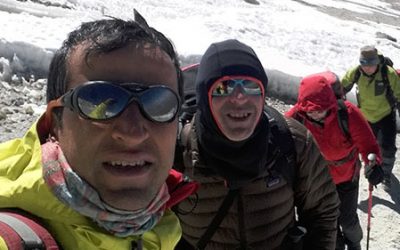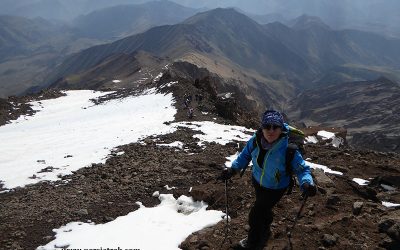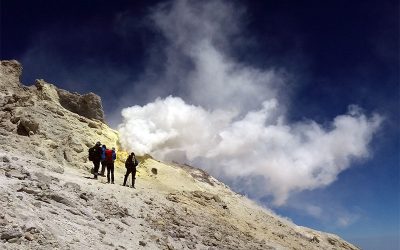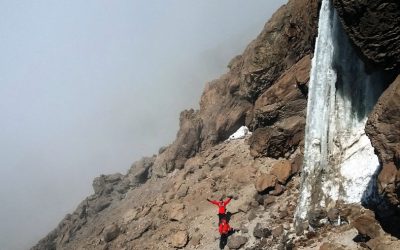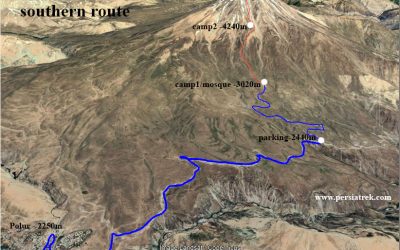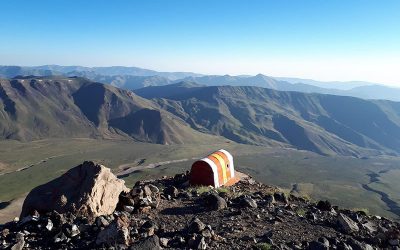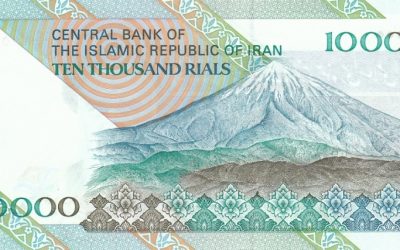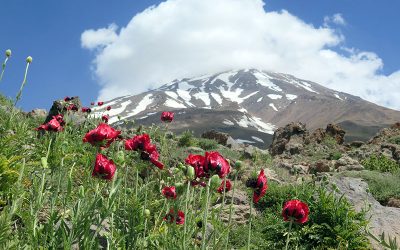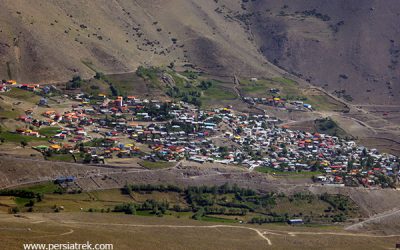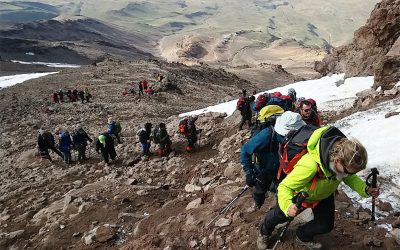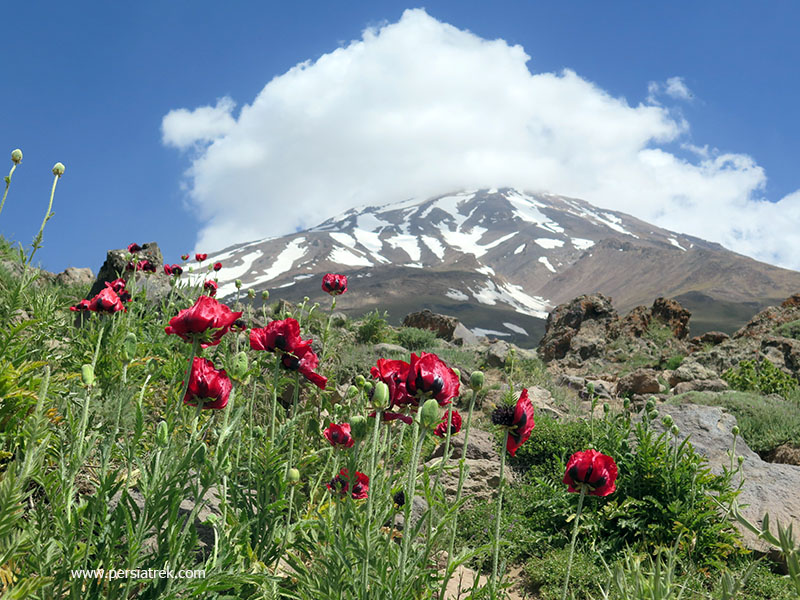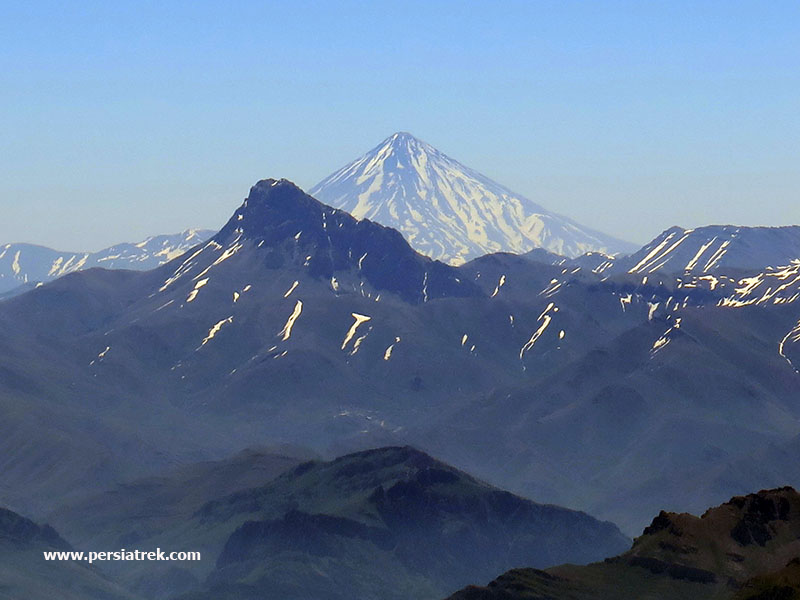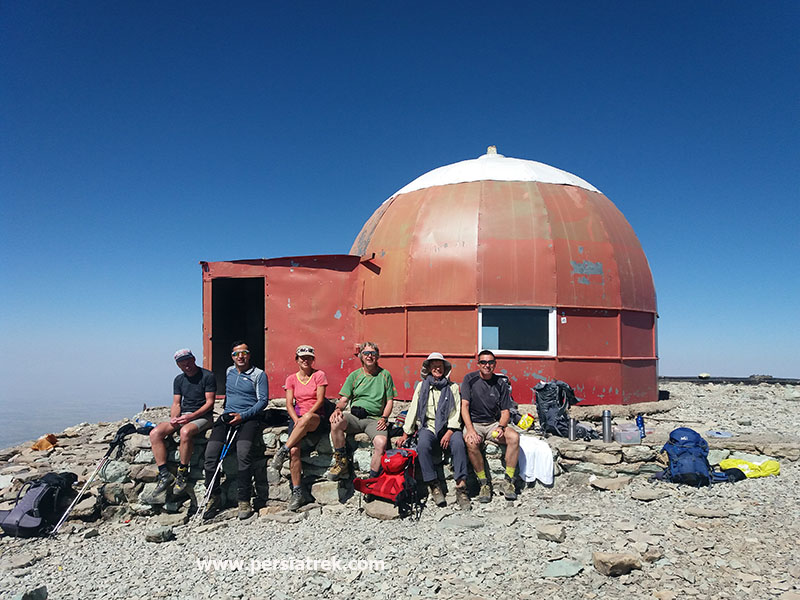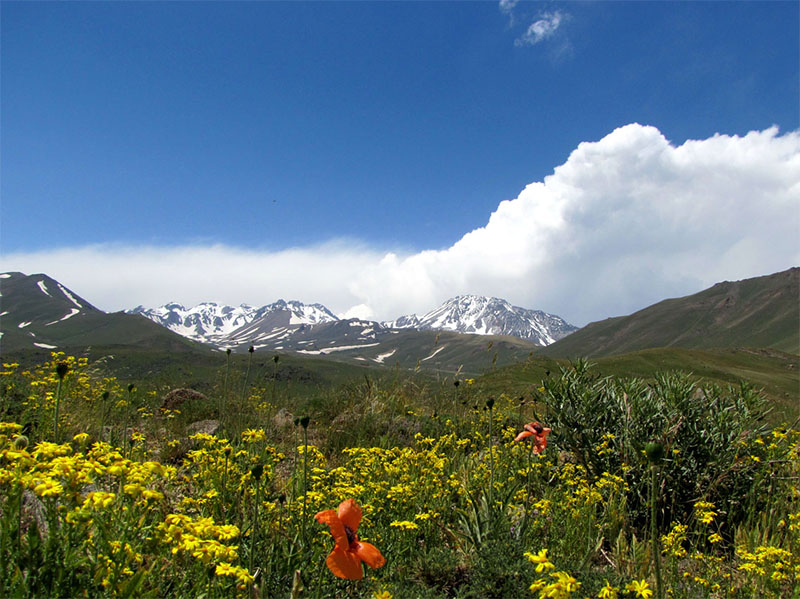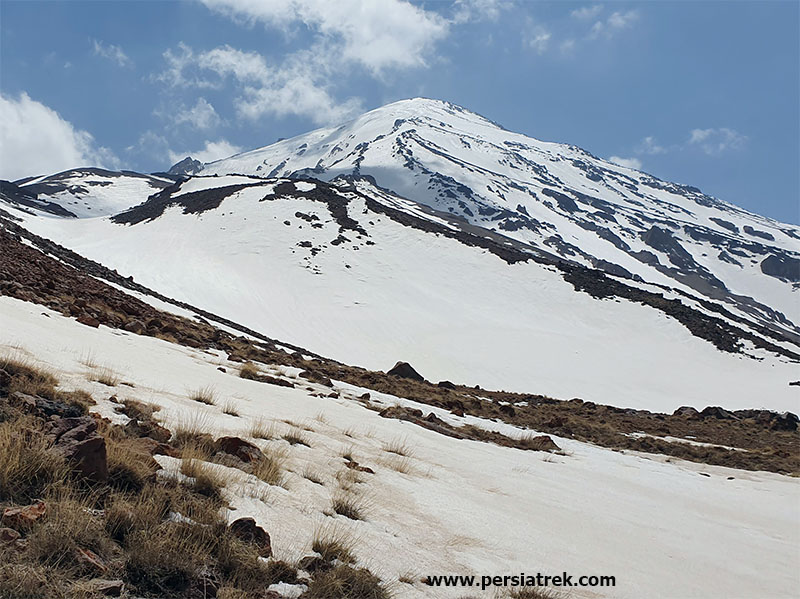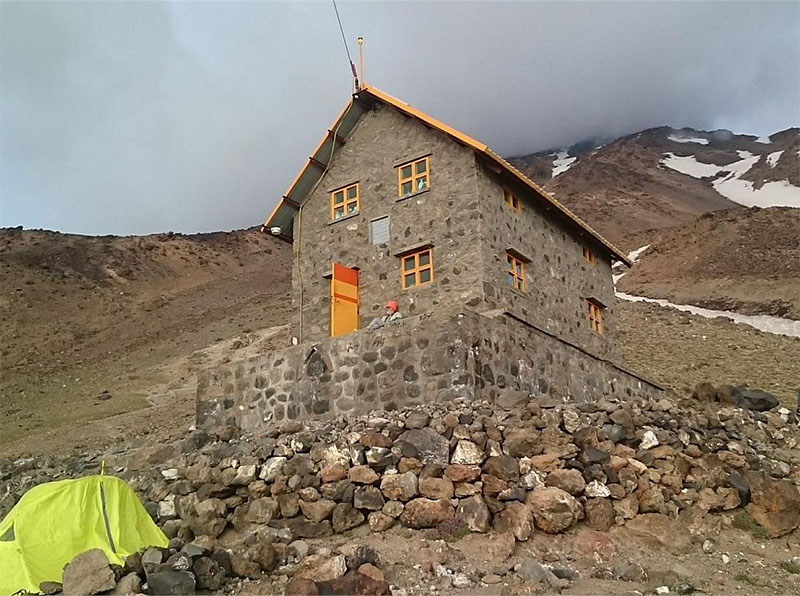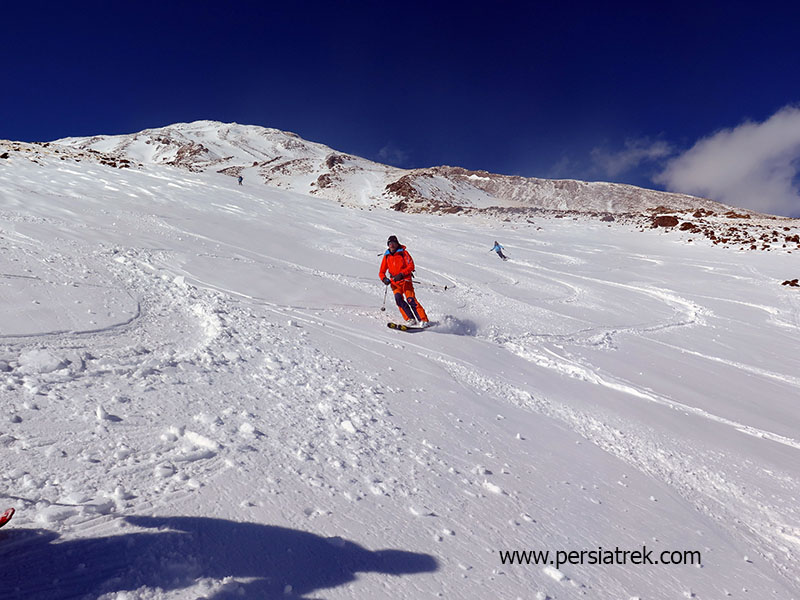Damavand packing list
Train for climbing mount Damavand
How hard is it to climb Damavand?
volcanic seven summits challenge
mount Damavand facts
6 best routes to climb damavand
Damavand mount ,Why should you climb it ?
Damavand peak routes
Damavand tour price
Damavand mountain weather
Nandal village
6 Tips for Damavand Mount acclimatization
A COMPREHENSIVE GUIDE FOR CLIMBING DAMAVAND
Introduction
If traveling to Iran and climbing Damavand mountain has not been in your plan, it should be.
This Persian jewel, located in the north of the Iranian plateau, is the highest volcano in Asia, and the climb to its stunning 5,610-meter peak will surely take your breath away, and the amazing scenery around it will captivate you.
Are beginners able to climb Damavand? The answer is yes, but in the summer season and from its non-technical routes. In order for a beginner to have a safe and enjoyable ascent at Damavand Peak, you must be fully aware of the conditions, seasonal weather, costs and requirements so that you can prepare yourself for this challenge.
We’ve created this detailed guide to prepare you with everything you need for your trip to climbing Damavand and guide you through every step of your ascent to the summit. Continue reading to learn more about the essentials of climbing Asia’s tallest volcano and one of the volcanic seven summits challenge
Necessary conditions for climbing Damavand peak
Although climbing the Damavand peak is accessible to almost all tourists traveling to Iran, there are a few requirements you need before you can join a tour and hike this peak.
By paying attention to the following requirements, you can have a safer and more enjoyable trip and also increase your chances of success in climbing Damavand Peak.
Age and level of mountaineering skills
If you have just started climbing or have not yet experienced a challenge like climbing Damavand peak, there is no need to worry.
Although climbing this peak is a multi-day climb at high altitude,since climbing Damavand in not technical you don’t necessarily need advanced climbing training to reach this peak, especially if you do this trip with a tour and the help of a professional Damavand climbing guide.
Climbing Damavand peak in the right season and route and in a good weather condition is possible for most people who have an average level of physical fitness and physical health.
One of the few restrictions you will find to climb Damavand Peak is age. Only people over 14 years old can start this climb.
Gear & Equipment
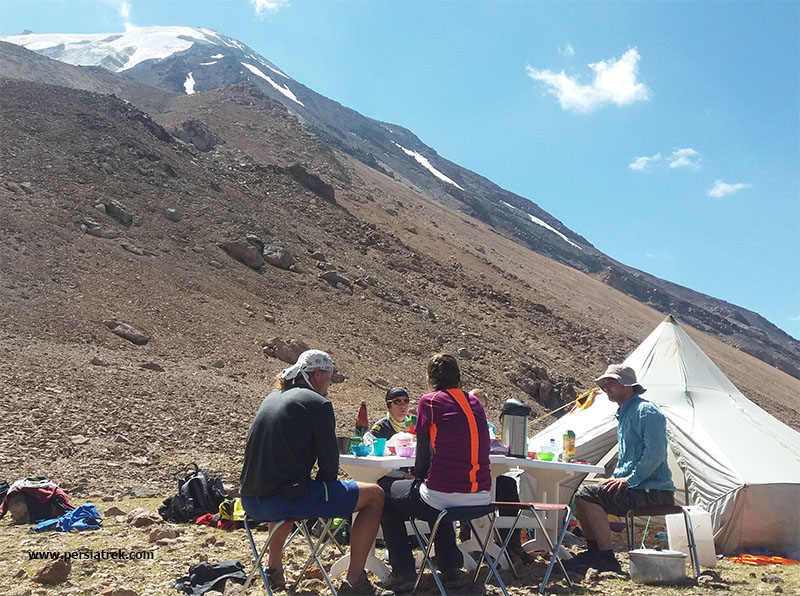
Damavand peak has a variable climate and the temperature difference between night and day is very large, and even in July or August there is a possibility of snow or rain.
Therefore, you must have suitable and high-quality equipment that is efficient in these harsh weather conditions then having lightweight, waterproof and water-resistant equipment is highly recommended for climbing Damavand Peak.
Some examples of equipment or items you may need to bring with you include:
- -10 Degree Sleeping Bag
- Trekking Poles
- Insulated Trekking Gloves, Pants, and Winter Jacket
- Hiking Boots
- 60 Liter Main Rucksack
- 30-40 Liter Day Pack
However, one of the most important challenges when doing long-term and multi-day trips is to try to take with you enough and quality equipment with the least volume and weight.
Carrying heavy packs can be a challenge for climbers of any experience level, especially when climbing high altitudes.
For this reason, tour operators carry many camping equipment such as tents, chairs and tables. Therefore, it is necessary to consult with your tour operator about the necessary equipment that you must bring with you.
Damavand tour operator
If you plan to successfully climb one of the highest volcanoes in the world in your first attempt, it is worth contacting an Iranian tour agency and booking a Damavand tour.
Climbing to a height of more than 5,500 meters is not an easy task, but most climbers can do it with the help of professional and experienced local guides.
The local guide you choose should have the necessary experience and skills in the following areas:
Terrain: Damavand peak is a volcanic and cone-shaped mountain and has many ridges and valleys to climb and descend, and many of them looks similar .
Damavand is a mountain where you can easily get lost in foggy weather or at night. Only experienced and professional guides who have a high level of mountaineering knowledge and experience many climbs from different routes in Damavand can be reliable in difficult mountain conditions.
Weather: Damavand peak has variable and sometimes unpredictable weather. A professional guide who has experienced many climbs in Damavand peak in different conditions can make a more accurate assessment of the weather conditions and, based on these assessments, make a better plan for a safer and more successful climb.
Safety checks: A professional mountain guide always checks the safety of the group members and whenever he sees any symptoms of altitude sickness in them, he does the necessary work to prevent the problem from becoming acute. The presence of such guidance gives the team members a sense of security and peace.
Finding a reliable tour agency can be a challenge, some agencies only think about making a profit and customer satisfaction is secondary to them.
The success rate in climbing to the top is one of the important parameters in evaluating a suitable agency. You can make the right choice by researching and checking the opinions of customers who have used the services of these agencies.
Traveling to Mt. Damavand
The first step to reach Damavand peak is to fly to Tehran, the capital of Iran. One of the unique features of Damavand peak is its proximity to the capital of Iran, with less than two hours of driving from Tehran, you will reach the foot of Damavand mountain. Normally, after flying to Tehran, you stay one night in Tehran and the next day you go to Damavand peak.
The best time to climb Damavand
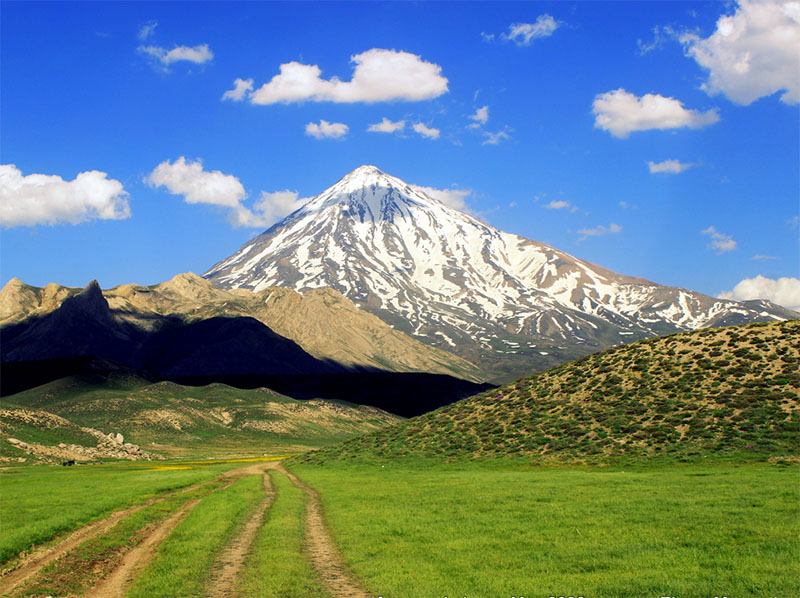
One of the great things about climbing Damavand is that it can be climbed all year round.
However, you should keep in mind that certain times of the year are much more suitable for climbing than others, which will give you a safer and more comfortable experience.
In the following, we explain the conditions of Mount Damavand at different times of the year so that you can find the best time to climb.
July to mid-September
The most popular time to climb mt Damavand is July and August, because firstly, the days are longer at this time, secondly, the weather is warmer and there is less snow and ice on the climbing route . Thirdly, We have the lowest amount of snow and rain in this time period.
The negative point of climbing Damavand at this time is that it is crowded and there are many climbers in the mountain, especially during the weekend when many Iranians go to this mountain.
May and June
If you plan to visit the beautiful and historical cities of Iran such as Isfahan, Yazd and Shiraz in addition to climbing Damavand, we suggest this time because the weather in Damavand is not too cold and the cities have moderate weather. You can see the most beautiful views of Damavand mountain at this time, the green slopes and valleys full of snow add to the beauty of this magnificent and beautiful mountain.
The negative point is that there is more snow on the climbing route and also more snow and rain fall.
Late March to mid-May
The best time to skiing in Damavand, especially April, which is perfect for Damavand ski . Compact snow without the danger of avalanches and relatively good weather are the best opportunity to enjoy skiing from an altitude of 5600 to 2600 meters. 3000 meters of skiing from top of Damavand to its slopes is a unique experience that can be found in few mountains.
December to March
Winter climbing season. Damavand is very cold in the winter season and has very strong winds, and those who have a high level of climbing experience and ability and are interested in challenging climbs can choose winter to climb Damavand.
Mid-September to November
Damavand also gives you the opportunity to climb in the fall season. In this season, it is quieter and the climbing route has the least amount of snow throughout the year. Snowfall and rain are a little more than in summer, but the biggest challenge is the cold weather and shorter days.
Trekking Tour
Damavand Expedition
Duration : 6 days
From June to October
Physical rating : 4 out of 5
Trekking Tour
Alamkuh & Damavand
Duration : 9 days
From June to October
Physical rating : 4 out of 5
Trekking Tour
Touchal & Damavand
Duration : 6 days
From June to October
Physical rating : 4 out of 5
Trekking Tour
Damavand Economy
Duration : 4 days
From June to October
Physical rating : 4 out of 5
Trekking Tour
Sabalan,Alamkuh,Damavand
Duration : 15 days
From June to October
Physical rating : 5 out of 5
Trekking Tour
Damavand Northeast Route
Duration : 6 days
From june to September
Physical rating : 4 out of 5
Trekking Tour
Damavand western route
Duration : 6 days
From June to September
Physical rating : 5 out of 5
Trekking Tour
Damavand northern route
Duration : 6 days
From June to September
Physical rating : 5 out of 5
Trekking Tour
Damavand northwest route
Duration : 6 days
From June to September
Physical rating : 5 out of 5
Ski Tour
DAMAVAND & LASEM SKI TOUR
Duration : 8 days
From March to April
Physical rating : 5 out of 5
Ski Tour
DAMAVAND SKI TOUR
Duration : 6 days
From February to May
Physical rating : 5 out of 5
Ski Tour
DAMAVAND & ZAGROS SKI TOUR
Duration : 15 days
From February to March
Physical rating : 5 out of 5
Climbing Damavand popular routes
Damavand peak is a semi-active volcano with a height of 5610 meters.
Mount Damavand is the highest peak of the Iranian plateau as well as the highest volcano in Asia and one of the volcanic seven summits challenge.
There are 16 known routes to climb Damavand mount, because of having this amount of climbing route it is a unique mountain in Iran .
In this article, we intend to briefly explain 6 of the best routes to climb Damavand.
Persiatrek Company with professional mountain guides in Iran can guide you in climbing Damavand Peak from any of these routes.
1- southern route
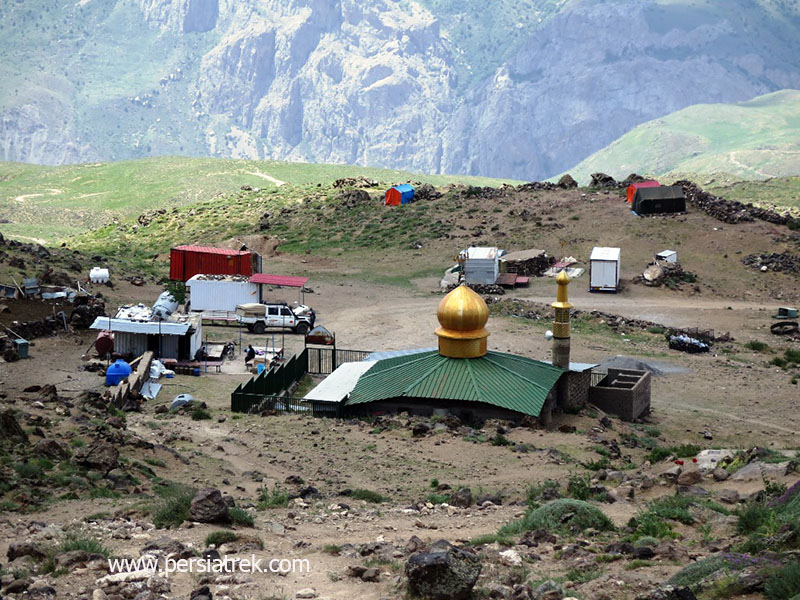
Southern route is the easiest route for climbing mount Damavand therefore it is the most popular route to climb it.
Advantages of climb Damavand from southern route:
- The simplicity of the route and no need for technical equipment to climb (crampons, ropes, etc.)
- There is a big Hut (Bargah sevvom) at elevation of 4260m which has facilities such as private rooms ,beds, restaurant and bathroom.
- It is possible to use mule and porter to carry loads
- Being suitable for skiing and not having the risk of avalanche
- Having a helicopter pad also the possibility of faster rescue compare with other routes .
- Proximity to the starting point of the climb to the city of Tehran (2 hours drive and about 100 km)
The last village before trekking start point : Rineh(2100m) / Polur (2300m)
Distance from the village to the beginning of the climb (by car): 20 kilometers
The trekking start point: Gosfandsera (Sahib Al Zaman Mosque) (3050m)
Hut / Shelter : hut( Bargah sevvom) (4260 meters)
Difficulty of the route: simple trekking. No glacier
Skiing: the possibility of climbing & descending with skis from the beginning of the climb to the summit
2- Northeast route :
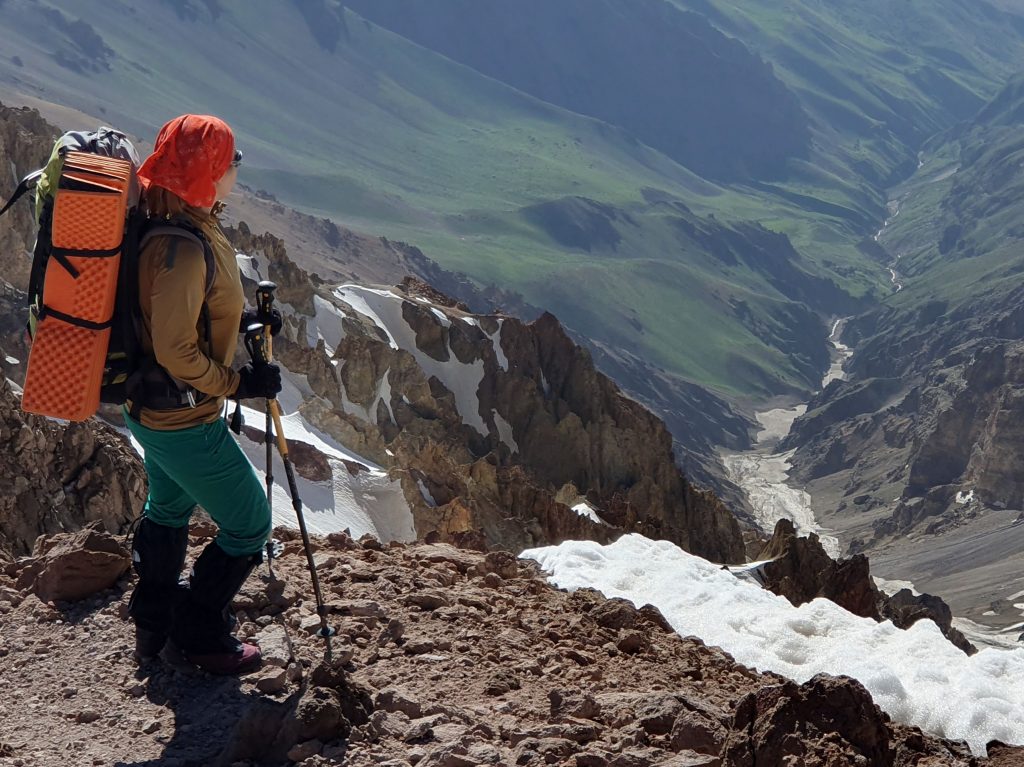
This route is the second easiest route to climb Damavand . It starts from the village of Hajidela or Nandal in the north of the peak and after crossing the plain, it reaches the side of Takht-e Fereydoon
Advantages of climb Damavand from northeast route:
This route is easy and not technical
This route is cleaner and quieter than the southern route
Due to its location in the north of Damavand peak, the path is green and beautiful
There is a shelter at an altitude of 4380 meters
It is possible to see the largest and most beautiful Damavand glacier (Yekhar valley) from this route
- The last village before trekking start point : Hajidela / Nandal (2300m) , 130 km driving from Tehran
- Distance from the village to the beginning of the climb (by car): 10 kilometers
- The trekking start point: Gardaneh Sar (2950m)
- Hut / Shelter : Shelter Takht-e Fereydoon (4380m)
- Difficulty of the route: simple trekking. No glacier but snow field
- Skiing: the possibility of climbing & descending with skis from the beginning of the climb to the summit
3- western route :
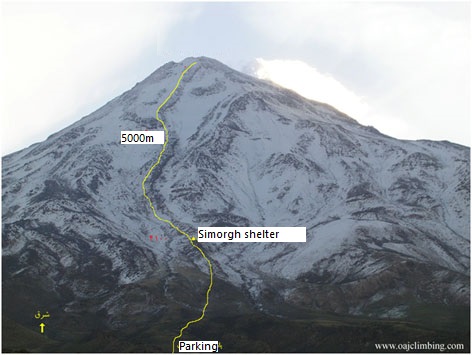
The western route is the second most popular route of Damavand peak. The proximity of the starting point of this route to the village of Polur and ofcorce to the city of Tehran, as well as having a large and well-equipped shelter, are the reasons for the popularity of this route.
Advantages of climb Damavand from western route:
- The second largest shelter of Damavand peak (Simorgh shelter) is located on this route
- This route starts from Lar National Park, which is one of the most beautiful national parks in Iran
- Unlike the southern and northeastern routes, there are no sulfur springs at the end of this route, which facilitates the ascent
- The western route and the northwestern route have the shortest climbing route and the distance to Damavand peak
- The last village before trekking start point : Polur (2300m) , 80 km driving from Tehran
- Distance from the village to the beginning of the climb (by 4wd car): 45 kilometers
- The trekking start point: Mountaineering Parking area (3250m)
- Hut / Shelter : Shelter Simorgh (4100m)
- Difficulty of the route: simple trekking. No glacier
- Skiing: the possibility of climbing & descending with skis from the beginning of the climb to the summit
4- Northern route :
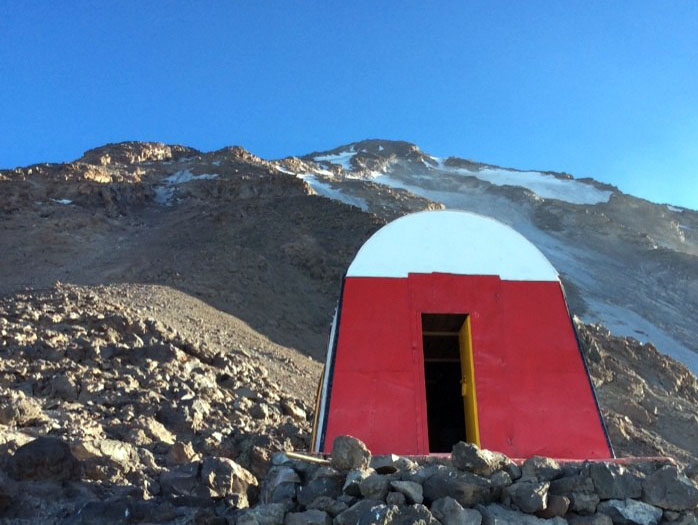
The northern route is the most difficult route of Damavand peak among the routes that have shelters.
Being on the north side and the passing of two glaciers, as well as the steep slope of this route, are among the reasons for the difficulty of this route. This route, like the northeast route, starts from Nandal village
Advantages of climb Damavand from western route:
- Having two shelters at the height of 3900 and 4800 meters
- This route is the most technical route among the normal routes of Damavand peak
- Some of the most prominent and huge permanent glaciers in Iran, such as Khortab Sar, Dobi Sel, Yechar, Siuleh, and Arushok are located on the northern slopes of Mount Damavand, and it is very magnificent to see them.
- The last village before trekking start point : Hajidela / Nandal (2300m) , 130 km driving from Tehran
- Distance from the village to the beginning of the climb (by 4wd car): 0 kilometers
- The trekking start point: Nandal (2300m)
- Hut / Shelter : First shelter (3900m) and second shelter (4800m)
- Difficulty of the route: difficult hiking. passing the glacier
- Skiing: not recommend for skiing
5- Northwestern route (Yal-e Sardagh):
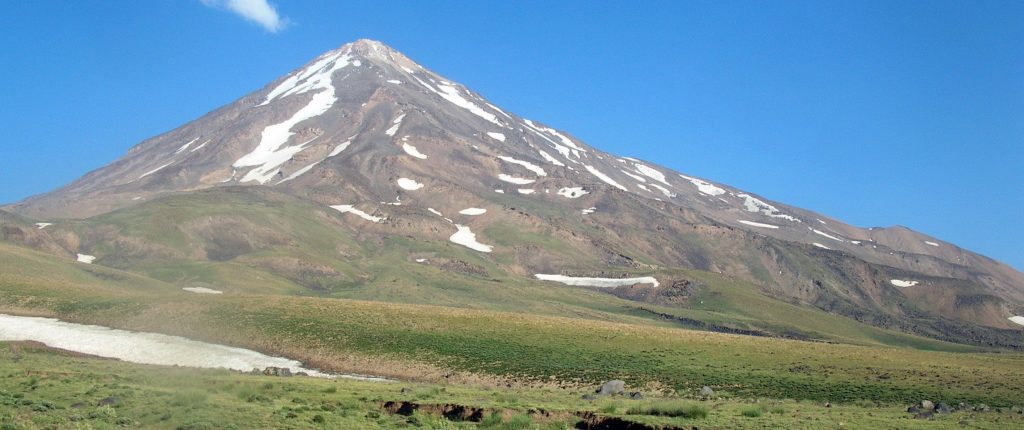
Sardagh Ridge means: the point and ridge connecting Mount Damavand to Alborz Mountain is located in the northwest ascent route, and climbers climb the highest ridge of Damavand on this route. This route is one of the most pristine routes to climb Damavand Peak.
Advantages of climb Damavand from Northwestern route
route:
- The northwest route and the west route have the shortest climbing routes to Damavand.
- It is possible to access the origin of the ascent at an altitude of 3,600 meters with two-wheel drive vehicles
- Among all Damavand routes, the northwest route has the highest starting point because Yaal Dag is the connecting point of Damavand with the Alborz mountain range.
- The northwest route is located near the important and permanent glaciers of Damavand, such as Siuoleh and Dobisel, and has wonderful views and effects.
- The last village before trekking start point : Polur (2300m) , 80 km driving from Tehran
- Distance from the village to the beginning of the climb (by 4wd car): 60 kilometers
- The trekking start point: Sardagh area (3600m)
- Hut / Shelter : no shelter
- Difficulty of the route: hard trekking. passing snow fields
- Skiing: the possibility of climbing & descending with skis from the beginning of the climb to the summit but reaching to start point is long and difficult
Eastern routes
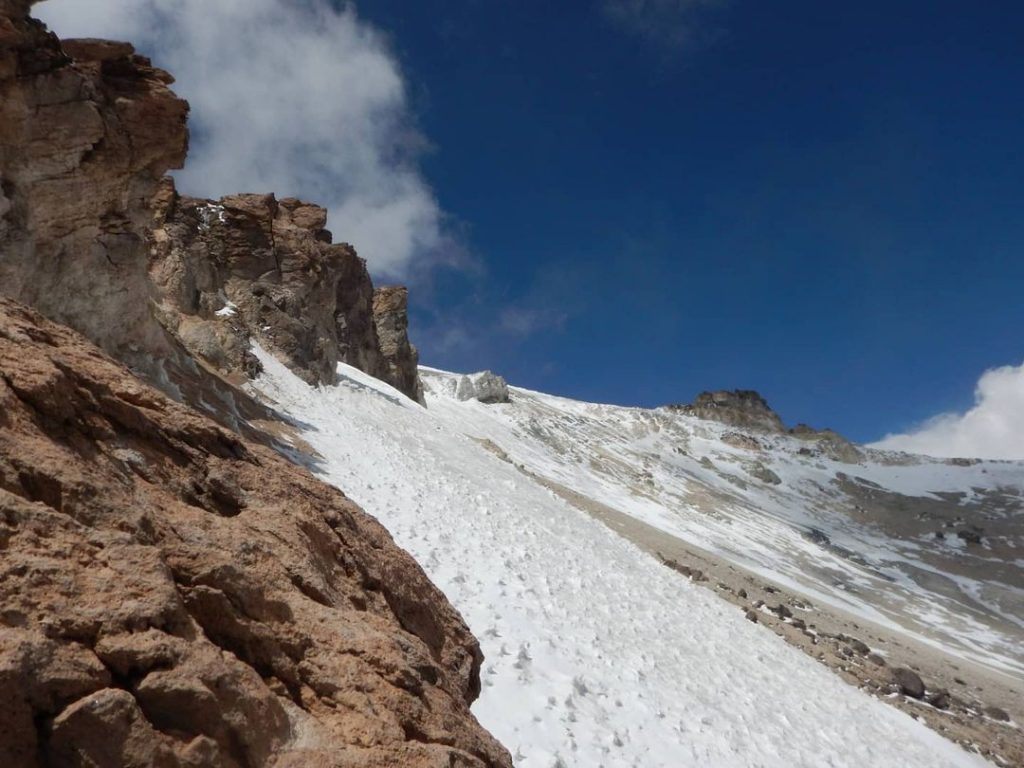
The eastern face of Damavand has 3 clear ascent routes, which are, after ignoring the internal routes of Yakhar valley, from north to south:
First: Malar ridge
Second: Vazminchal ridge
Third: Ab-e Garm ridge
All three routes meet at an altitude between 5200 and 5400 and enter Damavand peak from the east of Sulfur hill.
The two main eastern glaciers are located between the ridges of these 3 routes.
Advantages of climb Damavand from eastern route:
The eastern routes of climbing Damavand peak are among the most pristine and less frequented routes of climbing Damavand peak, and it can even be said that most of their routes do not have a clear path.
– The origin of the eastern routes is generally less than 2,500 meters, and even in Ghazaneh route, they are about 1,750 meters high, and due to the large height difference with Damavand peak, they are different from other Damavand peak routes.
– Unlike the route of other fronts of Damavand, the ascent of all eastern routes starts from villages and centers with asphalt roads.
– Larijan spa and tourist attractions east of Mount Damavand are located as close as possible to the eastern routes of the ascent and can be used after the ascent.
Main eastern route (Yal-e Ab-e garm) :
- The last village before trekking start point : Ab-e garm (2150m) , 110 km driving from Tehran
- Distance from the village to the beginning of the climb (by 4wd car): 0 kilometers
- The trekking start point: Ab-e garm village (2150m)
- Hut / Shelter : no shelter
- Difficulty of the route: hard trekking. passing glacier
- Skiing: the possibility of climbing & descending with skis from the beginning of the climb to the summit
.

